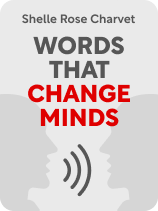

This article is an excerpt from the Shortform book guide to "Words That Change Minds" by Shelle Rose Charvet. Shortform has the world's best summaries and analyses of books you should be reading.
Like this article? Sign up for a free trial here.
Which people on your team work best in collaboration? Which ones have a lone wolf personality type?
We all have mental habits or motivation patterns that inform the way we behave. One of these is our work style. Generally, people prefer to work alone or in collaboration with others. They find that one style over the other brings out the best in their performance.
Read more to learn how to identify the work style of the people on your team and interact with them in a way that resonates with their style.
Team Player vs. Lone Wolf Personality Type
In Words That Change Minds, Shelle Rose Charvet uses the term “Style” to refer to someone’s preferred level of interaction with other people. Generally, a person exhibits either a team player or lone wolf personality type. Team players do their best work in close collaboration with others—when they’re alone, they may struggle to focus and get things done. In contrast, lone wolves need their own space to do their best work and get distracted if other people are nearby.
To identify whether someone is a team player or a lone wolf, pay attention to how much they mention others when describing their tasks. Team players emphasize the actions of those around them: They might say “We launched our new ad campaign before the deadline we set for ourselves.” Lone wolves emphasize the actions and decisions they make as individuals: “I finished designing the full set of banner ads two months before launch day.”
(Shortform note: In Never Split the Difference, Chris Voss contends that people who use “lone wolf” language are giving away their low status in their organization, while people who use “team player” language are signaling their personal authority and decision-making power. This isn’t because people in power identify more with their team. Rather, they want to avoid prematurely committing themselves to any decisions that may restrict them later, so they imply that they need approval from another stakeholder. For example, a CEO might say to a potential investor, “We’ll strongly consider your offer” to avoid prematurely committing to a business partnership, instead of saying “I’ll definitely consider your offer.”)
If you’re managing a team, Charvet recommends that you make sure that team players have opportunities to collaborate with their coworkers while also making sure lone wolves have the personal time and space they need to do their work alone.
| Counterpoint: Balance Collaboration and Privacy In The Extended Mind, Annie Murphy Paul challenges the idea that some people work best in collaboration while others are most productive alone. Rather, she contends that across the board, people think best when they have both: They regularly spend some time with collaborators and some time alone. According to Paul, thinking alongside other people activates different parts of the brain than thinking alone, giving you more valuable insights. In particular, friendly debates with other people inspire everyone involved to be more rigorous in their thinking, resulting in more logically sound conclusions. On the other hand, giving yourself time alone to think allows you to dive into complex, abstract ideas that would be difficult to grapple with in a busy environment. During this time, Paul emphasizes that total privacy is key, as the human brain is easily distracted. Even the smallest stimuli can disrupt your train of thought. With this in mind, Paul advises managers to avoid forcing their employees into permanently distracting open-office plans if they can help it. |

———End of Preview———
Like what you just read? Read the rest of the world's best book summary and analysis of Shelle Rose Charvet's "Words That Change Minds" at Shortform.
Here's what you'll find in our full Words That Change Minds summary:
- Why it's sometimes hard to understand what others are trying to say
- The 14 kinds of mental habits that explain how people think
- How to understand others better and build positive relationships






